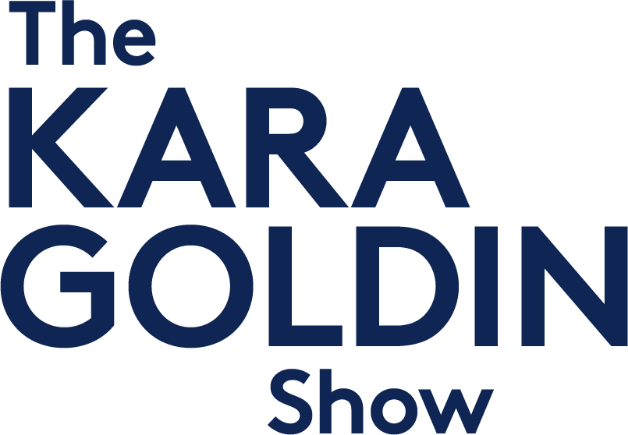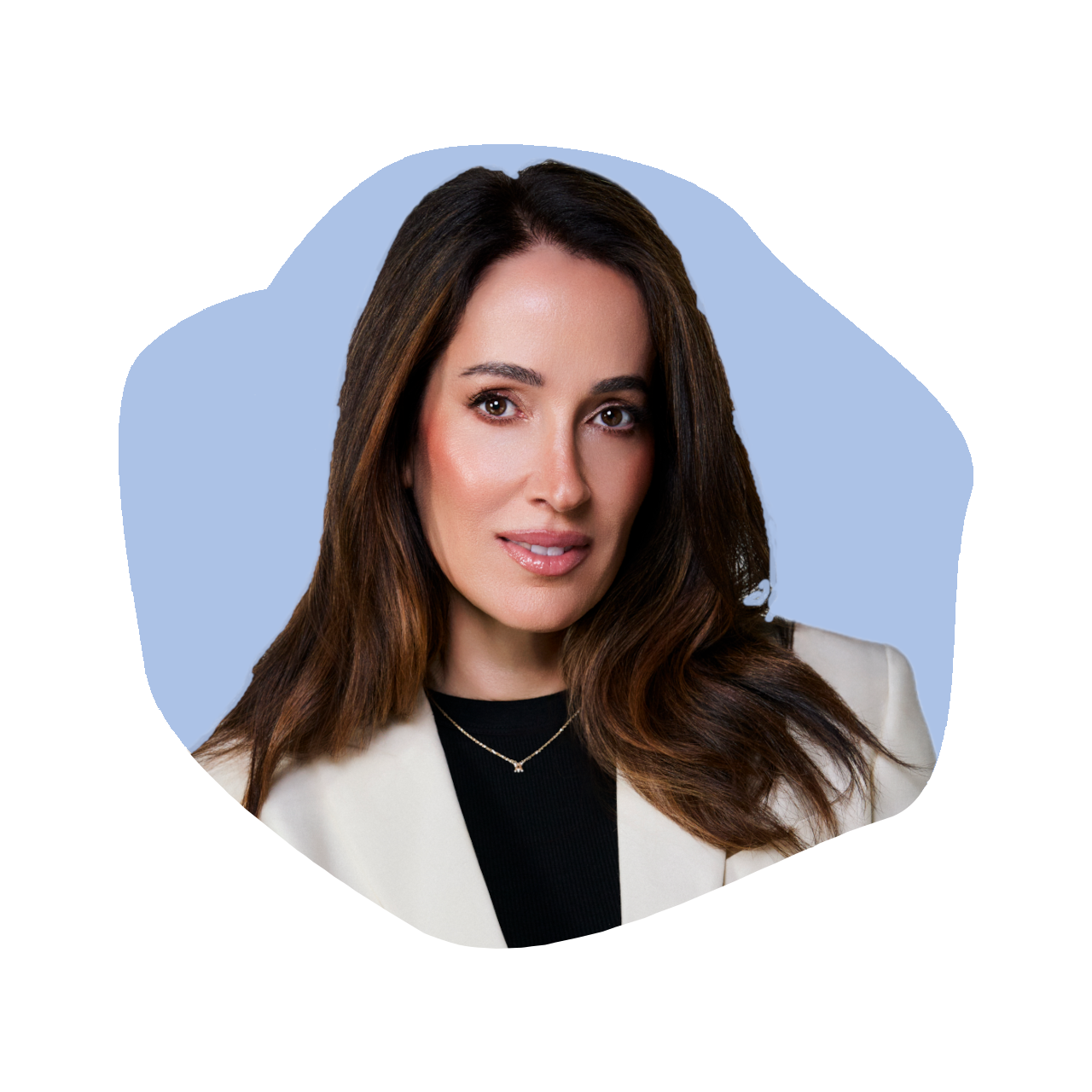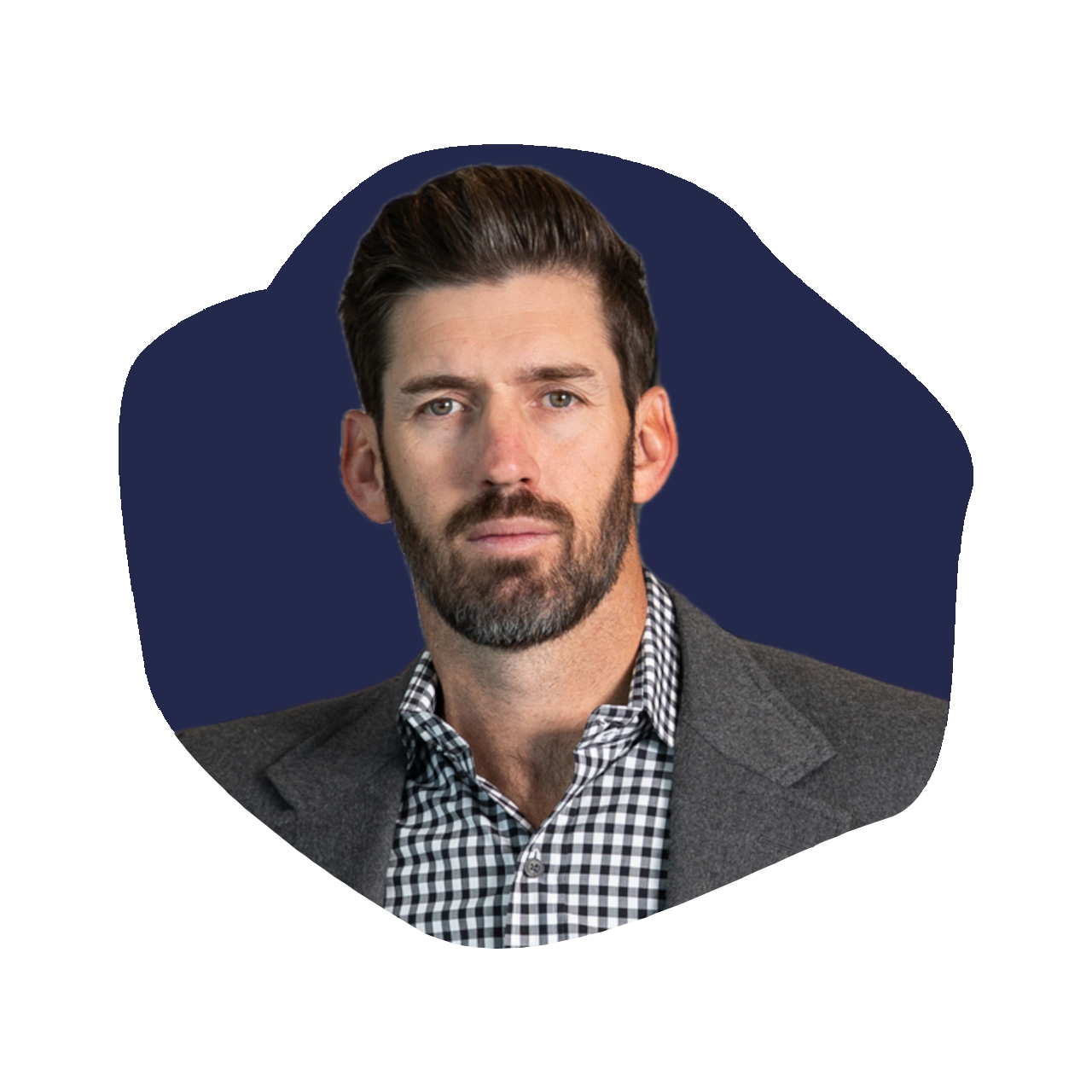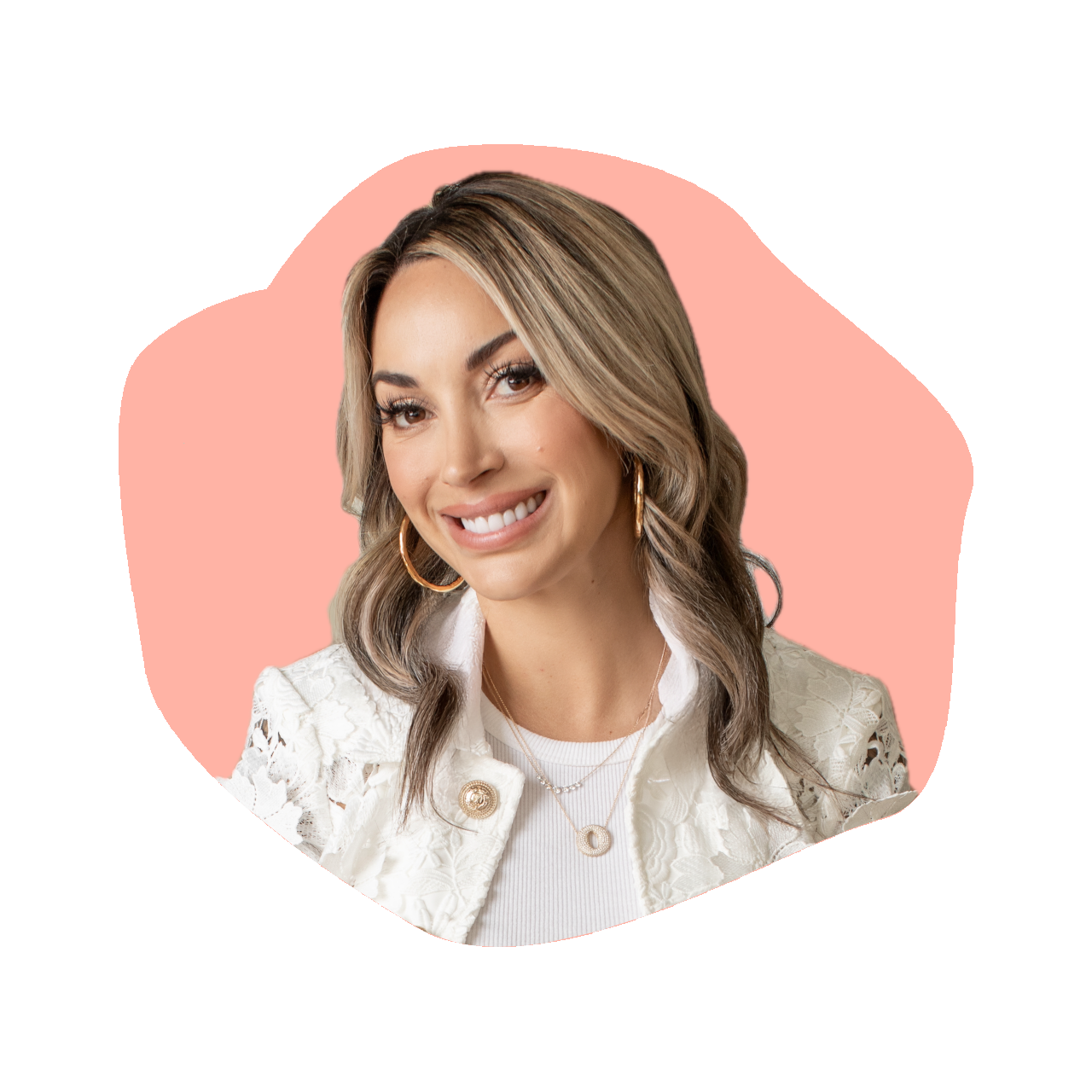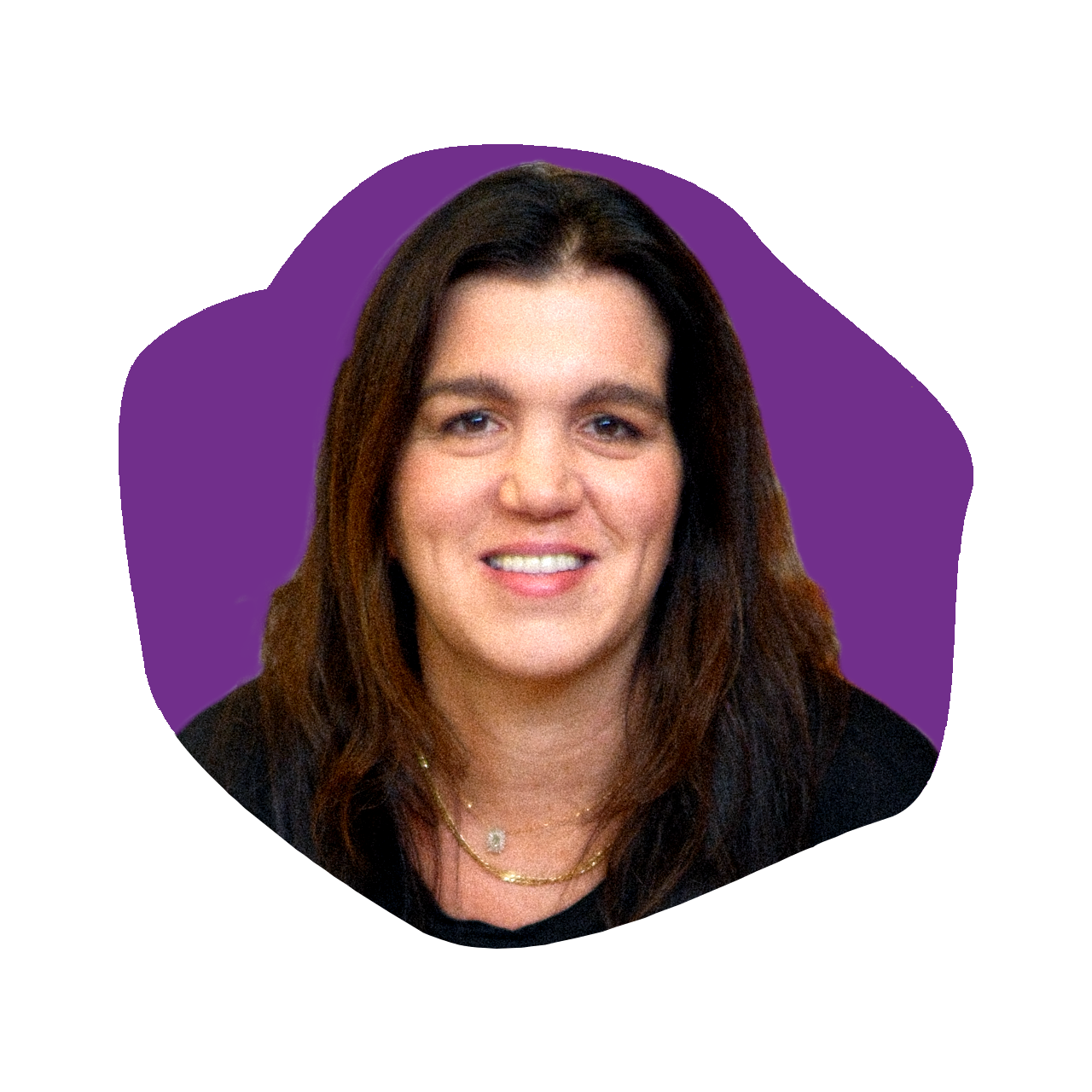Jasmina Aganovic: Founder & CEO of Future Society
Episode 680
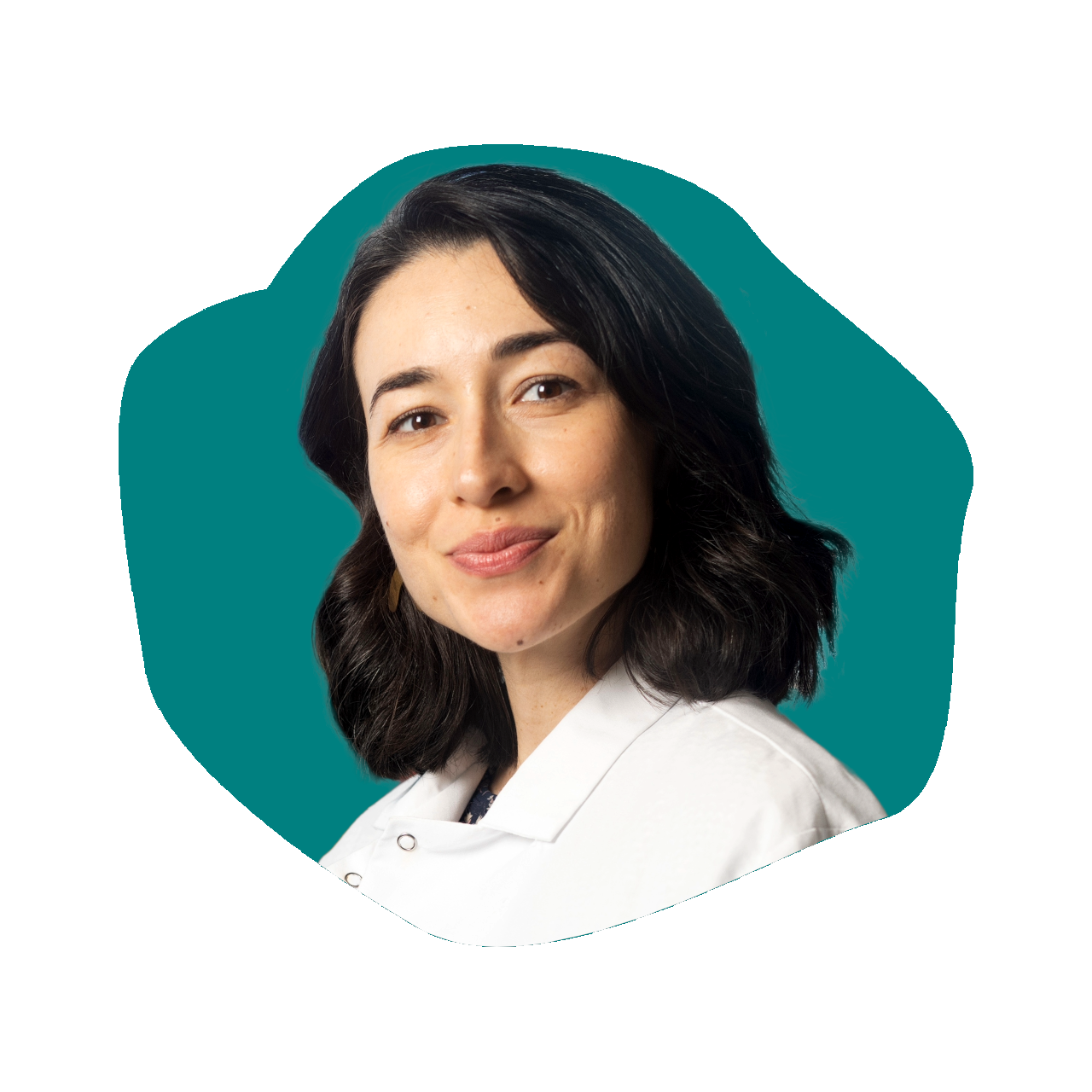
On this episode of The Kara Goldin Show, we’re joined by Jasmina Aganovic, Founder and CEO of Future Society—a revolutionary fragrance brand using biotechnology to bring extinct flower scents back to life. With a background in chemical and biological engineering from MIT, Jasmina is merging science and storytelling to create a completely new genre in fragrance.
During our conversation, Jasmina shares the inspiration behind Future Society, how she and her team are sequencing DNA to resurrect lost aromas, and why she believes biology will shape the future of beauty. We dive into the creative process behind crafting emotional, science-backed scents, the sustainability angle, and the powerful intersection of memory, technology, and design.
Whether you’re into beauty, biotech, or bold new business models, this episode is packed with insights you won’t want to miss. Now on The Kara Goldin Show.
Resources from
this episode:
Enjoying this episode of #TheKaraGoldinShow? Let Kara know by clicking on the links below and sending her a quick shout-out on social!
Follow Kara on LinkedIn – Instagram – X – Facebook – TikTok – YouTube – Threads
Have a question for Kara about one of our episodes? Reach out to Kara directly at [email protected]
To learn more about Jasmina Aganovic and Future Society:
https://www.instagram.com/wearefuturesociety
https://www.youtube.com/watch?v=-bBn9VfEULs
https://hypebae.com/2024/10/future-society-jasmina-aganovic-interview-extinct-flower-perfume-where-to-buy
https://wearefuturesociety.com
Transcript
Kara Goldin 0:00
I am unwilling to give up that I will start over from scratch as many times as it takes to get where I want to be. I want to be you. Just want to make sure you will get knocked down. But just make sure you don’t get knocked out, knocked out. So your only choice should be go focus on what you can control. Control. Hi everyone, and welcome to the Kara Goldin show. Join me each week for inspiring conversations with some of the world’s greatest leaders. We’ll talk with founders, entrepreneurs, CEOs and really, some of the most interesting people of our time. Can’t wait to get started. Let’s go. Let’s go. Hi everyone, and welcome back to the Kara Goldin show. Super, super excited to be joined by a true innovator in the world of beauty, science and scent, Jasmina Aganovic, founder and CEO of an incredible brand that I was not aware of honestly before, but I am so happy that I had a chance to not only meet her, but also try the product Future Society. And if you have not had a chance to try these products, you must, must, must, all. We’ll talk a lot about sort of the background of it and why they smell so amazing, but with her background in chemical and by a logical Engineering from MIT Jasmina has spent her career in the cutting edge of biotech and beauty, from leading the skin microbiome revolution at Mother dirt to re imagining fragrance through extinct flower DNA with Future Society so so excited that she has developed this incredible genre of fragrance where science meets storytelling in the most unexpected way. So I cannot wait to get into all of this, but especially how sense through DNA sequencing. So So, so interesting. So Jasmine. Welcome to the show.
Jasmina Aganovic 2:00
Thanks so much for having me, Kara, I’m excited to be here. And yeah, thanks for all of those kind words. Oh my gosh.
Kara Goldin 2:09
Super, super excited. So well, i The more I read about your background, but also the brand’s background. Can you share a little bit more about that? Sort of how did you get here?
Jasmina Aganovic 2:22
Yeah, twisty turning path. It’s never linear. After graduating from school, I knew I wanted to go into the beauty industry because I loved that industry. I knew I wanted to innovate in it. So my my career has always been going in that direction. I worked for brands. At the earliest stage, I was part of the early team at Living Proof, where I really got to see how important communication is in science and storytelling. And then several years later, I started that brand mother dirt, which you mentioned, which was really at the forefront of the skin microbiome. And that was an important experience for me, because I saw how amazing biology can be, how it can do things that chemistry can’t. And so coming off of that experience, I wanted to continue working with biology, and that’s really where the idea for this started to emerge. I worked at a biotech company. They had this fun Jurassic Park culture, and so they were kind of trying to do the Jurassic Park thing, but in a less scary way. So they started sequencing the DNA of extinct flowers. And my mind, of course, went in the direction of fragrance. And that’s just like one small piece of what we do here. So that’s kind of the journey of how it all came together.
Kara Goldin 3:37
And so What year was this that Future Society actually came out. Future
Jasmina Aganovic 3:42
Society is just over a year old, so we launched at the very end of 2023, okay,
Kara Goldin 3:46
well, super, super, incredible, and the scents are so nice. So the original spark for Future Society kind of stemmed from this career that you had in in science. But when you think about the storytelling aspect of the brand as well, how important do you think that is for building a brand? I think you have to have a great tasting product. If that is the situation with your product, of course, it’s not with yours, but, but you have to have an incredible scent. But how about the story? Like, how important do you think that is for people today when they’re looking at purchasing products, especially in beauty, critical,
Jasmina Aganovic 4:30
critical, especially in a category with so much happening in it, it’s so saturated, a standout story can make such an incredible difference. And I think in a category like fragrance, also, storytelling is really everything fragrance is about. It’s such an emotionally driven category. So that really compounded the importance of storytelling. And then to add to it, you know, you are using science and technology in a different way. And that could make it seem intimidating and scary, or it can be really hopeful and inspiring. And your primary tool there, again, is storytelling. So storytelling has been such a core part of of what we talk about here, because we see how important it is to hopefully connecting with people, ultimately
Kara Goldin 5:21
so extinct flowers. Can you talk a little bit about how this all came about from figuring out that you could actually derive what you want from these extinct flowers?
Jasmina Aganovic 5:35
So this is something that would not be possible, was it not for very recent advancements in technology, specifically, and you mentioned this earlier, DNA sequencing. So if people here are familiar with companies like ancestry.com for example, you spit in a tube, you send it off, and it tells you all about your background. We of course have companies like 23andme they’ll tell you more information, things like your eye color and hair color. That was the same technology that was used in this case, except instead of looking for eye color and hair color, what we were interested in was scent molecules. Right the genome of these flowers. What type of scent molecules did it produce? And that started to give an effective direction for what these flowers might have smelled like. And this was actually the point in time that I came along and was able to, obviously work with the team at ginkgo, the biotechnology company I was working at before, but really start to translate this into the world of fine fragrance. So this is where creativity kind of got taken to the next level in working with perfumers. So we started to integrate perfumers into the process. And what was so interesting is, you know, they had never seen DNA sequencing data, but what was so fascinating for them was that they were able to see what smell molecules these flowers produced, and then start to create their artistic interpretation of what the flower might have smelled like with their experience and aroma chemicals and botany, and really start to kind of reconstruct the world of this flower, which was really exciting. That’s
Kara Goldin 7:18
That’s amazing. So how did you first come up with the kind of the the first extinct flower like, did you think of a flower that you no longer see? Did you read about it? I mean, how did you sort of first think, let’s go and create something out of this, because it’s no longer around. There’s
Jasmina Aganovic 7:39
a broader motivation here for me, which is that I believe biology can really transform categories. I mean, it can do things. Chemistry can’t. It’s more aligned with consumer values. It’s better for us and for the environment and so just broadly, for everyone listening like this is not just about extinct flowers. This is about, you know, one small part of how biology and technology, more broadly, can be used to do things that weren’t previously possible. And so now, to kind of get back to your question, you know, I’d finished my work at Mother dirt. I was planning on starting, kind of my next thing, I was working at a biotechnology company to see what was possible with these new technologies that have emerged. And they had, you know, finished the sequencing of the the flowers, and in looking at the flowers and their stories, I just thought that, thought that there was something really beautiful about letting their stories live on. Each of the flowers is so unique and different, that it is like inspiring, and it helps you feel more connected to the natural world, because they are from nature. We are from nature. And so strangely, you feel connected over time, and that’s really where all of this started to come to be. I think what I also really loved was this idea that people have about science and especially coming off of the pandemic, that science is just about clinical studies, and like this new way of making things, and I’ve always seen science as a creative tool, as a way to tell new stories. And so in a category like fragrance, where it isn’t about clinical studies, it’s all about stories, what an interesting way to tell a new story that is only possible through through science, so that that was really the journey and motivation for how this all came to be.
Kara Goldin 9:29
So you launched the brand a year ago, and how long did it take from the time that you thought, Okay, this is something that I hope is possible, you didn’t know whether or not it was going to obviously be possible or actually be wanted, I guess, by the consumer, as much as it is today. But how long did that process take?
Jasmina Aganovic 9:50
Well, the formal process for starting the sequencing started closer to 2014 Wow. So it took many years to. Do that, yep. And I think the final sequences were developed or identified in 2017 okay. And then really the fragrance development ended up taking probably about two years. And so there were, like stopping points across all of that, but that’s kind of the arc of time for this whole,
Kara Goldin 10:21
this whole project. Obviously, there’s been fragrance around for some time. I think when you’re putting together today, synthetic fragrances, in many cases, they don’t have a good wrap, right? They’re not as expensive all of those things, but they’re not necessarily the worst, as I’ve heard before from other consumer brands, but when you think about things that traditional kind of fragrance houses have gotten wrong or simply miss about the future of scent, what do you think is sort of a key thing?
Jasmina Aganovic 10:52
You know, there’s a lot in in that question, and what was just shared, I think, like, certainly, what I’ve learned in fragrance is that there are a lot of parallels to the world that I spent more time in, which is skincare. So I still very much so feel like a novice and fragrance, I still feel like I’m learning a lot about it, but there were a lot of parallels in fragrance that I noticed. So for example, in skincare, there was this phase of like, clean always being, like better and like the Goldin standard. But, you know, with time, people started to realize that, you know, there’s so much nuance in these, like blanket statements, that sometimes clean is not always better, and that actually synthetic ingredients might actually be safer for a variety of reasons associated with the manufacturing process or irritation to the skin or what have you in fragrance, a lot of that is true too. A lot of the debate around like synthetics revolves around sustainability and accessibility as well. And many fragrances end up opting for more synthetic options. And people think that this is always a bad thing, but actually, you know, synthetics can be used remarkably well with a very sophisticated, sustainable kind of end end goal. So, you know, that’s all just to say that there’s a lot of nuance to this conversation. You know, what surprised me? Or what have I like learned that the fragrance houses, you know, do well, or maybe don’t do well. You know, I have a lot of respect for the fragrance houses. I think the they do science and art at the same time. Composing fragrances is really an invisible art form. You know, I know one area that they’re working really hard on is around transparency and communication across their supply chain, especially with very ambitious sustainability targets. And so I think that continued advancements in transparency are just going to continue to heighten the level that that this industry is is operating at, and a lot of that is consistent with the skincare industry too. So it’s all very, very similar.
Kara Goldin 13:12
So you developed a company before Future Society, and what have you done differently? I guess, is the key thing. I think that most entrepreneurs, second time, entrepreneurs look back on their first and what would you say is sort of the big, I’ll never do that again, that you’ve done differently on the second Oh my
Jasmina Aganovic 13:33
gosh. Well, learning is just it just never ends, does it? And the world is also changing around you constantly. So the climate of building a direct consumer business in 2014 was so different than building a direct consumer business now in terms of, you know, universal lessons or things that, like I would never do again, I you know, it’s so interesting that you asked that I’m like, I don’t know that I’ve like, I would say, like, oh my god, that was like, such a horrible mistake. And like, I can’t believe I did that. Like, silly, silly, silly. I don’t know that I feel that way about things in my past. I mean, do I think that some things were different or better? Like, of course, but I guess I don’t, I guess I’m, like, not really dwelling on it. You know, lessons learned. I think just always it’s like, when you think you know your customer, you have to learn even more about them. So the customer really, being at the core is really critical. Connecting emotionally is so important. So like, continuing to focus on that. Like, there’s some of these, like tenants that are just tried and true. And I think with every company, I’ve just learned that you don’t get to skip the hard stuff. Never you know, you just never get to skip the hard stuff. And the hard stuff is always different for every company. It’s like. Yeah, it’s just never, it’s never rinse and repeat. And so I remind myself of that sometimes when things feel really hard, you know you don’t get to skip this. Every company is different. Every company has its learning curves, and that’s just the reality of it.
Kara Goldin 15:13
I think that that’s so true. When you launched the company, how many SKUs did you have, and how has that changed today? How many have you added? Yeah,
Jasmina Aganovic 15:23
we launched with six fragrances, and so that was the number of skews that we had. And then we launched travel sizes, which basically doubled that. And then we created some ancillary SKUs, so expansions of the fragrances into body care and candle some of which has been very well received. I think, however, if I were to do it differently, I really would have just continued to focus on our fragrances, because that’s really like, what our customer loves. And when I go back to, like, learn about your customer, and you think you know them, like, try again, you know certainly like, with being out there for a year now we really understand like, who our customer is, because it’s like, proven through data, versus when we were launching, we had a hypothesis of who this person is, but now we actually know them right, because we interact with them, we see them, we talk to them, and so that really helps inform like, how we think about like, the edit of our product line and the direction that we want to continue to take the brand. Are
Kara Goldin 16:22
there any fragrances that you thought were going to be just killer and didn’t work? Or were there any that you were like, Oh yeah, it’s pretty good. Maybe it’ll be number three or four, but it really has surfaced to be one of the better ones.
Jasmina Aganovic 16:37
You know, it’s so funny that you ask that it’s a little bit of a mix, like, there certainly has been like, you know, one or two fragrances that we thought would be like, more universally appealing, and then we have other fragrances that are like, remarkably sophisticated fragrances for a sophisticated nose. And it doesn’t necessarily mean that they are, like, going to perform at the top of the level. But it’s just so interesting to see how people perceive you as a brand based on your skews. And so we have six fragrances because we wanted, like, the breadth of, like, something that’s a little bit weird for like, a little bit more of a sophisticated nose, and then something that’s a little bit more like, will appeal to more people, um, and generally, like, things sort of ended up where we thought they were, but in the middle, there’s, like, a lot of things that definitely surprised us, like the thing that we thought was going to be more popular ended up being a little bit less popular, and the thing that we thought was going to be less popular ended up being more but I think the spectrum generally has sort of landed where we
Kara Goldin 17:39
thought It would. What do you hope a person feels when they pick up a bottle of Future Society and experiences it,
Jasmina Aganovic 17:50
hope and awe. Maybe, I don’t know, a little bit of a sense of inspiration for themselves. I, you know, we created this brand, you know, during the pandemic, right? And it was just like, there was a there was it was a really challenging time for a lot of people, and it was a time where I was realizing that, like, oh my god, like, there’s only one future story that’s being told to us, and it’s basically that, like, it’s all going to hell, and it’s like, terrible, and there are a lot of things to be afraid of, but like, factually speaking, the future hasn’t happened yet, and so at any given moment, right, there are an infinite number of futures that exist. So why are we resigning ourselves to, you know, this one narrative when there are so many potential ways that the future can take. And the thing that I always try and remember is that, like humans, have accomplished incredible things, which means that we’re always capable of that. So why don’t we continue to tap into that and remind ourselves of that. And so these products are meant to be, you know, an extension of this thinking and this feeling, but really meant to remind people that, you know, hopefully, as they hold one of our products, they can have that experience, right? Like, oh, I didn’t know you could do that. Isn’t that incredible? Like, wow, there are people out there doing this, and it’s just like, that little feeling of like, yes. You know, there are people every day that are doing incredible things, which is why we should believe that our future is worthy of that too.
Kara Goldin 19:09
Your packaging is beautiful. It’s simple, but it’s absolutely gorgeous. How did you think about that and and are you, I guess, are you happy with it. Do you think I always think that packaging is something that there’s always one little thing that needs to get adjusted after it goes out in the market, and you’re like, Okay, round one is done, and eventually we’ll get to that. But is there any learnings that you’ve had from kind of the first iterations of packaging?
Jasmina Aganovic 19:40
Yeah, definitely a lot packaging was, I think, one of the steepest learning curves we had. You know, me being a novice to fragrance. You know, it sounds so silly to say now, but I think, well, I know whether I was, like, willing to admit it to myself or not. I knew that I believed that. Because our story was so strong and our product was so strong that just leaning on those was enough and that we didn’t have to prioritize packaging as much. And so we didn’t in the work stream. We really focused on getting the fragrance right. We really focused on how we were going to bring the story to life and the packaging. We still have a lot that we’re proud of with the packaging. Like we chose the shape of the bottle because it’s unique. It’s like, a little bit like retro vintage, but it still feels futuristic. You know, the cap is this, like, very interesting bio resin that feels like a stone. It’s really meant to be, like a reference to the fossil, sort of like, you know, going back in time and, like, de extincting things. But, you know, we’ve, we’ve learned a lot, you know, this bio resin, even though it’s like a great sustainability story, it’s very susceptible to changes in humidity, and so the feeling is not quite as flush or as elegant as we want when you’re taking it off the cap and putting it on the cap. And you know, especially as we’ve entered into retail, we’ve seen that our bottles, because we were going again for sustainability. We wanted our footprint to be really small, but when you’re on retail, you don’t really stand out. And so some of the work that we’ve been doing over the last few months is figuring out how we can make tweaks and changes to still align with our sustainability values, but make sure that we’re still like, impacting people and connecting with people and the way that the brand was always intended to
Kara Goldin 21:22
so go to market strategy, when you were thinking about how you were going to get the product out there, can you talk a little bit about that and and kind of where it’s going now,
Jasmina Aganovic 21:35
definitely, when we launched, we were focused on direct consumer, which primarily continues to be our focus. A lot of PR so we hosted a lot of editors, really walked them through our process, took them to the Museum of Natural History, like really brought the whole process to life. We also partnered with a lot of influencers and sent out mailers that included our fragrances and brought the story to life. And that was really how we initially started, and kick started the buzz for for the brand, and it put us on the map. And, you know, a lot of people you know, were very excited about what we were doing and the fragrances themselves. And so that was really, that was really how it all, how it all began for us.
Kara Goldin 22:22
That’s awesome. So advice for other founders who are, who are trying to bring science, deep science, into the consumer world, I’ve, we’ve had an A number of people, including outside of beauty and and food that are working with AI and DNA and all kinds of things that we never thought you could do, and they’re possible now. But what, what is kind of the the advice that you would give to other founders who are thinking about this,
Jasmina Aganovic 22:59
you know, I think it all goes back to the customer, like, what is it that makes them connect with your product emotionally? What does it do for them, and what are the words that they use? And you want to be able to reflect that back in all of your points of communication. And what you you inevitably find is that the things that gets you really excited as a scientist might be really different than what your customer gets excited by. And it doesn’t mean that your science doesn’t matter. It doesn’t mean that it’s not useful. It doesn’t mean that you’re not accomplishing your vision. It’s purely a communication puzzle. So I think the customer is like a core part, part of that. And then I say, like, lean into the science aspect of who you are. One of the things that I think is my strength, and then occasionally drives my team crazy, is that I love gathering data points, like, I love it, love it, love it. Whenever we get a piece of like, negative feedback on Tiktok, for example, I get excited and I reach out to that person. I want to talk to them. I want to, like, understand what it was that they read or saw or experienced, because for us, this is a puzzle, right? How do you talk about extinct flower fragrances? No one has done that before. How do you connect emotionally? And so we’ve learned so much through these conversations. And so I really encourage them to gather input, gather data, like, especially from people who may have misinterpreted or have negative feedback. For you, those are the richest and most precious conversations to have, because those are the ones that you’re going to learn, learn the most. So I think those are like two general buckets of advice, like, really, really, really, know your customer and continue to get to know them. And then the second is, like, you know, lean into the scientist part of you. Gather data, continue gathering data, test your hypothesis, like and and especially from people who have like, different points of view.
Kara Goldin 24:52
Yeah, and that goes a long way. I mean, I remember in the early days of hint as well that I was not only finding new audiences. That I hadn’t thought of for our product, type two diabetes from when hint first came out in 2005 no one was talking about this form of diabetes, and that’s where I was learning about it was through consumers who were having a hard time with some of these diet sweeteners that were out there. So it’s fascinating how you’ll start to, you know, you never know what you’re going to hear from consumers, especially ones that are, you know, not happy or sort of questioning different things, but also ones that are, you know, sort of telling you about different audiences that are out there. So it’s so important to stay in touch with them, for sure. So finally, where do you hope Future Society lands in the next I don’t know, five years, two to five years, what are sort of your hopes for Future Society?
Jasmina Aganovic 25:52
Yeah, I hope that Future Society enables people to reframe what fragrance can be because of biology, I really think that there is an opportunity to expand how we think about our personal scent as a form of self expression, and I hope that people view us as a really imaginative, disruptive fragrance brand that maybe helps them feel a little bit more connected to themself and to nature as well. Jasmina,
Kara Goldin 26:22
thank you so much for joining us and sharing the incredible story and Future Society is just absolutely awesome. You’re opening up a new world where science, nature and imagination are all coming together. Everyone needs to definitely, definitely get their hands on some of the different fragrances. We’ll have all the info in the show notes, but where Future Society.com and I cannot wait to see where you guys go. So thank you again. Really, really appreciate it. And thanks everyone for listening. Thanks Kara, thanks again for listening to the Kara Goldin show. If you would please give us a review and feel free to share this podcast with others who would benefit. And of course, feel free to subscribe so you don’t miss a single episode of our podcast. Just a reminder that I can be found on all platforms. At Kara Goldin, I would love to hear from you too. So feel free to DM me, and if you want to hear more about my journey, I hope you will have a listen or pick up a copy of my Wall Street Journal, best selling book, undaunted, where I share more about my journey, including founding and building. Hint, we are here every Monday, Wednesday and Friday. Thanks for listening, and goodbye for now. Bye.
